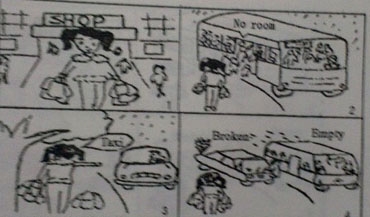题目内容
Many children first learn the value of money by receiving an allowance (pocket money). The purpose is to let children learn from experiences at an age when financial mistakes are not very costly.
The amount of money that parents give to their children to spend as they wish differs from family to family. Timing is another consideration. Some children get a weekly allowance. Others get a monthly allowance.
In any case, parents should make clear what, if anything, the child is expected to pay for with the money. At first, young children may spend all of their allowance soon after they receive it. If they do this,they will learn the hard way that spending must be done within a budget (预算). Parents are usually advised not to offer more money until the next allowance. The object is to show young people that a budget demands a choice between spending and saving. Older children may be responsible enough to save money for larger costs, like clothing or electronics.
Many people who have written on the subject of allowances say it is not a good idea to pay your child for work around the home. These jobs are a normal part of family life. Paying children to do extra work around the house, however, can be useful. It can even provide an understanding of how a business works.
Allowances give children a chance to experience the three things they can do with money. They can share it in the form of gifts or giving to a good cause. They can spend it by buying things they want. Or they can save it.
Saving helps children understand that costly goals require sacrifice. You have to cut costs and plan for the future. Requiring children to save part of their allowances can also open the door to future saving and investing. Many banks offer services to help children and teenagers learn about personal finance. A saving account is an excellent way to learn about the power of compound interest.
Compounding works by paying interest. So, for example, one dollar invested at two percent interest for two years will earn two cents in the first year. The second year, the money will earn two percent of one dollar and two cents, and so on. That may not seem like a lot, but over time it adds up.
1.Parents give their children allowances in order to _____.
A. show off their wealth of family
B. let them make more money
C. learn the value of money
D. help children manage family finance
2.What is the second paragraph mainly about?
A. The time to give allowances.
B. The way to spend alloweances.
C. the amount of allowances given to children.
D. Considerations taken to give allowances.
3.Why are parents adivsed to offer young children allowances strictly as planned?
A. To help children learn to make a budget.
B. To have children save money for larger costs.
C. To let children make fewer mistakes.
D. To give them more allowances next time.
4.What does the author intend to tel lthe readers?
A. The methods of limiting allowances.
B. The advice on a better family budget.
C. Teaching children to use allowances wisely.
D. Offering allowances to children properly.
1.C
2.D
3.A
4.C
【解析】
试题分析:文章介绍父母给儿童零花钱让他们学会理财,父母应该严格按照规定给孩子零花钱,这样可以帮助孩子学会做预算,还要学会存钱。
1.
2.
3.
4.
考点:考查教育类短文

 优学名师名题系列答案
优学名师名题系列答案